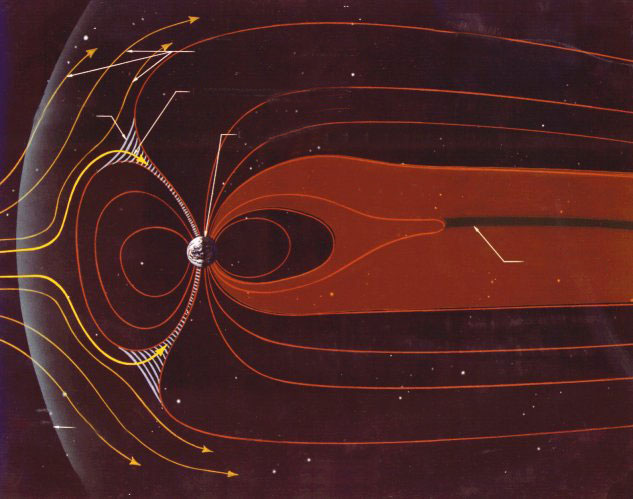The discovery of exoplanets has opened up a new frontier in the search for life beyond our solar system. One of the key factors that determine a planet’s habitability is its ability to retain an atmosphere and liquid water. This ability is linked to the planet’s magnetic field, which protects it from the harsh radiation and solar wind from its parent star. Earth’s magnetic field, or magnetosphere, is one of the key reasons it has been able to sustain life. But is this ability unique to Earth, or can other terrestrial planets possess a similar magnetosphere? In this blog post, we’ll explore the recent discovery of a potential magnetosphere around a terrestrial exoplanet and what it means for the search for life beyond our solar system.
The Star System and Exoplanets:
The star system in question is YZ Ceti, located in the constellation Cetus, about 12 light-years away from us. It is a red dwarf star, which is statistically more likely to have terrestrial planets orbiting close to it. In fact, three exoplanets have been detected in this system, all of which are similar in mass to Earth. However, they are also very close to the star, with orbital periods ranging from two to four and a half days. This proximity means that the planets are likely too hot to host liquid water, even the farthest planet potentially has surface temperatures of at least 90 degrees Celsius.
Magnetospheres and Terrestrial Planets:
The magnetosphere is a key factor in determining a planet’s habitability, as it protects the planet’s atmosphere from being stripped away by solar wind and radiation. Earth’s magnetosphere is generated by its molten iron core, which produces a magnetic field that extends into space. The magnetic field interacts with the solar wind, creating a protective barrier around the planet.
In the past, magnetospheres have been detected around larger exoplanets, such as hot Jupiters and brown dwarfs. However, detecting a magnetosphere around a terrestrial exoplanet has proven to be much more challenging, as the planets are much smaller and their magnetic fields are much weaker.
The Discovery:
In the case of YZ Ceti, scientists were able to detect a potential magnetosphere around the closest exoplanet using radio telescopes. The radio emissions coming from the star showed powerful bursts of radio energy that seemed to be correlated with the orbit of the closest planet, which takes approximately two days to complete. The emissions were similar to those detected from Jupiter’s magnetosphere, particularly when its moon Io interacts with it.
The emissions suggest that the exoplanet has a powerful magnetic field that interacts with the magnetosphere of the star. This interaction likely creates an aurora, similar to what is seen on Jupiter when its moons interact with its magnetosphere. However, the aurora on YZ Ceti would likely be invisible in optical light due to the brightness of the star, but visible in radio light.
Implications and Future Research:
The discovery of a potential magnetosphere around a terrestrial exoplanet has significant implications for the search for life beyond our solar system. It suggests that Earth’s ability to produce a magnetosphere may not be unique, and that other terrestrial planets may be capable of retaining their atmospheres and liquid water as well.
Further research is needed to confirm the presence of a magnetosphere around the exoplanet in question and to determine whether other terrestrial exoplanets possess similar magnetospheres. The discovery also raises questions about the habitability of planets orbiting red dwarf stars, as they are more likely to have terrestrial planets orbiting close to them, but may also subject those planets to high levels of radiation and solar wind.
